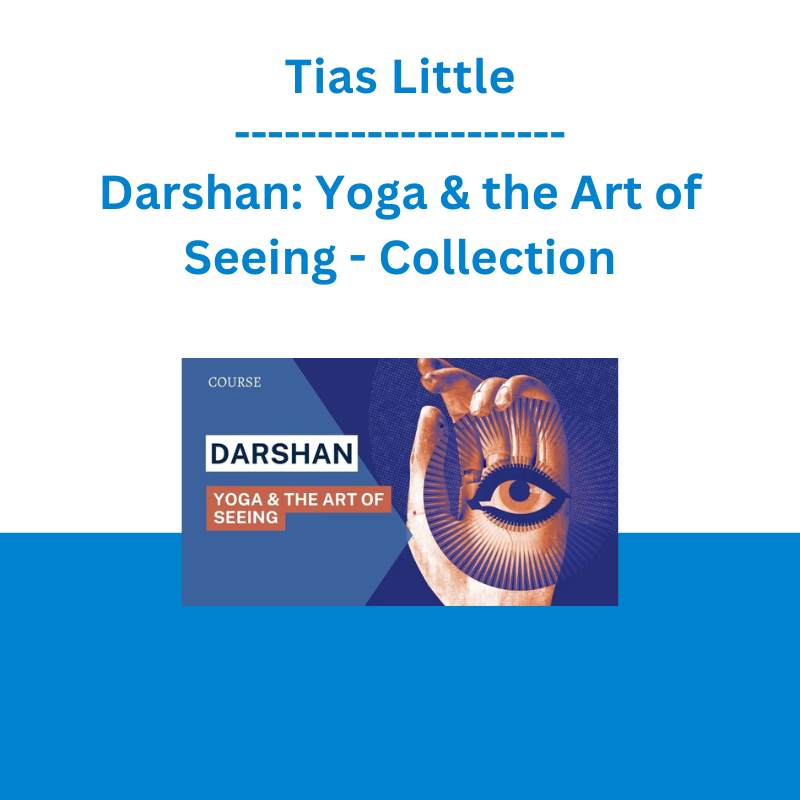*** Proof of Product ***
Exploring the Essential Features of “Tias Little – Darshan: Yoga & the Art of Seeing – Collection”
About
In yoga seeing is equated with knowing. Yet this seeing is not merely to see with the eyes but involves another kind of seeing. In this course, we explore the art of seeing. We consider the third verse of Patanjali’s Yoga Sutras that suggests that the very essence of yoga is seeing. In the practice of yoga postures, we focus the gaze called drsti in order to concentrate awareness. In rituals of devotion throughout India, yoga requires being “seen” by the deity. To be seen by a force greater than ourselves is critical to yogic revelation. This involves not only being seen but seeing the power of the divine. In this class, we explore darshan as instrumental to the path of yoga and how yogic seeing leads to a state of profound union.
Module 1: Seeing is Knowing
For centuries humankind has rendered images (cave painting, stone monoliths, sacred geometry) to connect to a great mystery beyond ourselves. How does image connect us to the divine? In yoga, knowledge comes through witnessing or seeing (vidya). How can we learn to see and in what ways, if any, does god become visible? In this module, we will explore how awareness itself is like a mirror, a lens, or an eye with a capacity to see.
Module 2: The Sublime and the Terrible—Images of Gods and Demons
In the iconography of India and Tibet, psychological states such as anger, fear, bliss, or enlightenment get personified as demonic or divine figures. In this module, we investigate how archetypal energies incarnate in the forms (murti) of peaceful and wrathful entities and that seeing the image is necessary for transformation.
Module 3: The Eyes, Brain and Visual Field
In this module, we investigate the powerful influence that the eyes assert over the brain and body. Tias shows slides of the eye-brain connection along with the cranial bones, brainstem, and pituitary gland. Practice includes meditation using the third eye (the Ajna chakra) and how it is an opening to the subtle body.
Module 4: Psychology of Being Seen, Hiding and the Era of Zoom
In order to heal the subtle body, we must not only see but allow ourselves to be seen. While imperative for healing, being seen can evoke real fear and terror. In this module, we look at the emotional and psychological challenges around seeing and being seen, especially in light of the proliferation of the screen in today’s society.
Students who take this course will:
Explore how image is critical for spiritual revelation
Practice drsti: the eyes as a means to harness meditative awareness
Gain insight into Tantra as a way of seeing the divine
Read verses from the Upanisad and Yoga Sutra that describe yoga as seeing
Learn the difference between vidya and avidya, seeing and not-seeing
Explore yantras from the yoga traditions that enhance the power of seeing
Learn about Avalokitesvara, the deity with 1,000 eyes
Learn the subtle body connections to the third eye, the brainstem and the spine
Explore icons of the Hindu and Buddhist traditions that enhance the power of seeing
Author
Tias Little
Tias Little synthesizes more than 30 years of study in classical yoga, Sanskrit, Buddhism, anatomy, and trauma healing in his dynamic, original style of teaching. Tias was an English major at Amherst College and earned a Master’s degree in Eastern Philosophy from St. John’s College in Santa Fe in 1998. Tias co-directs Prajna Yoga, an internationally-acclaimed yoga school located in Santa Fe, New Mexico with his wife Surya. He is the author of three books: Meditations on a Dewdrop, Yoga of the Subtle Body, and Practice is the Path: Lessons and Reflections on the Transformative Power of Yoga.
Please see the full list of alternative group-buy courses available here: https://lunacourse.com/shop/










 Chris Capre - Advanced Price Action Ongoing Training & Webinars
Chris Capre - Advanced Price Action Ongoing Training & Webinars  Dave Landry - Stock Selection Course
Dave Landry - Stock Selection Course  Trade Like Mike - The TLM Playbook 2022
Trade Like Mike - The TLM Playbook 2022  Sovereign Man Confidential - Renunciation Video
Sovereign Man Confidential - Renunciation Video  Atlas API Training - API 570 Exam Prep Training Course
Atlas API Training - API 570 Exam Prep Training Course  The Daily Traders – Exclusive Trading Mentorship Group
The Daily Traders – Exclusive Trading Mentorship Group